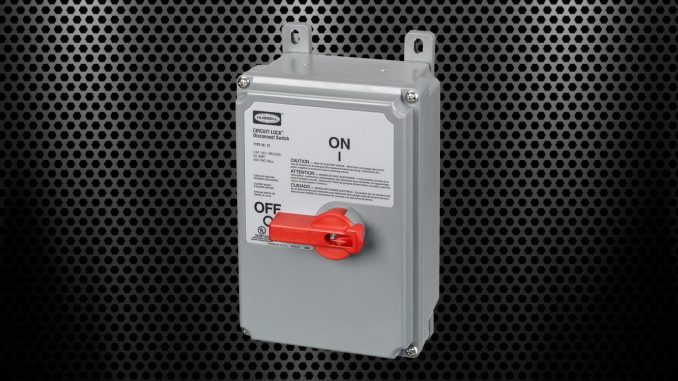
Everyone is aware of the potential dangers of working with electricity. That is why there are many safety devices on the market that help with the safe operation of electrical equipment. Among these are disconnect switches. These work by rapidly disconnecting circuits from power supplies in the case of an emergency. Disconnect switches work in conjunction with circuit breakers that interrupt the flow of electricity along a circuit when the current exceeds the circuit’s capacity. Disconnect switches can work with AC or DC systems and are also available for single-phase and three-phase power.
Applications for Disconnect Switches
Disconnect switches are often used on generators and electrical motors. In rural situations, electricity providers often require that customers provide a generator disconnect switch if an auxiliary generator is operating on their system. This will ensure that the lineman is not in danger of electrocution. Disconnect switches that are used on generators are also called a transfer or isolation switches.
Types of Disconnect Switches
There are two types of disconnect switches; battery disconnect switches and electrical disconnect switch. Here is a bit about both of these types of switches:
Battery Disconnect Switch: This is a knife switch that works by preventing unwanted drain from a vehicle battery, which typically occurs when the vehicle is seldom used. It is installed over either the positive or negative terminal on the battery. Another type of battery disconnect switch has a removable knob and can work to protect a vehicle from being stolen when its parked in a public garage for a long period of time.
Electrical Disconnect Switches: These are used in electric motors like industrial forklifts, agricultural vehicles and aircraft tow tractors, as well as a lot of electrical appliances like heater and air conditioner. The switches work to protect the contractors from incoming power. Both the International Electrotechnical Commission (IEC) and the National Electrical Manufacturers Association (NEMA) work together to make sure these switches are up to international standards.
Disconnect Switches Specifications
If you are looking for a disconnect switch to use in a specific application, there are a number of things you have to consider:
- Current Rating: Also called ampacity, this is the amount of electrical current a device can carry while remaining within its temperature setting.
- Operating Voltage: This is the voltage at which the disconnect switch is designed to operate at.
- Horsepower Rating: This is the amount of power the switch can develop without failure when operating continuously or for a specified period of time and under specific conditions.
- Short-Circuit Interrupt Capacity: This is the rating at which the switch can interrupt current without being destroyed or causing an electric arc with unacceptable duration.
- Number of Poles: This refers to the number of circuits the switch controls. A single pole switch will control just one circuit while a double pole switch controls two separate circuits.
Fuse Types
Another important consideration you must make while selecting a disconnect switch is the fuse type. Fuse types will vary according to their voltage, their interrupting rating, their dimensions and their design. Disconnect switches are available in the flowing classes: Class CC, Class H, Class J, Class L, Class T and Class K.
Mounting Styles:
Disconnect switches are also available in a number of mounting styles. These are as follows:
- DIN rail: This device is designed for mounting on a standard DIN rail.
- Panel Mount: These devices can be placed into or through a depression within an existing panel so that its face is flush, or nearly flush with the panel. These are used in applications where the connector is required to fit a panel cutout.
- Wall/Box Mount Receptacle: These are usually flanged and threaded for an accessory and intended for permanent mounting.
- Base Mount: These switches use a mounting pad and screws.
- Flange mount: These mounted plugs (flanged inlets) or flange mounted receptacles (flanged outlets) are devices attached to panels by bolting or riveting the flange in place through the holes in its surface.
Categories:
Disconnect switches can be divided into categories which include fusible, non-fusible, enclosed fusible and enclosed non-fusible.
- Fusible safety switches fuse with the switch in a single enclosure which provides an easy way to manually open and close the circuit while the fuse protects against overcurrent.
- A non-fusible safety switch does not incorporate any fuses into their enclosure and they provide no circuit protection capability. Their only purpose is to provide an easy means to open and close the circuit.
Disconnect switches are effective safety devices that can be used in protecting workers from electrical hazards. If you are using one of these switches in an electrical application, it is important to be familiar with the different types, categories and specifications to make sure you are using a switch that is best suited for your task. That way you can make a smart choice in electrical protection.

